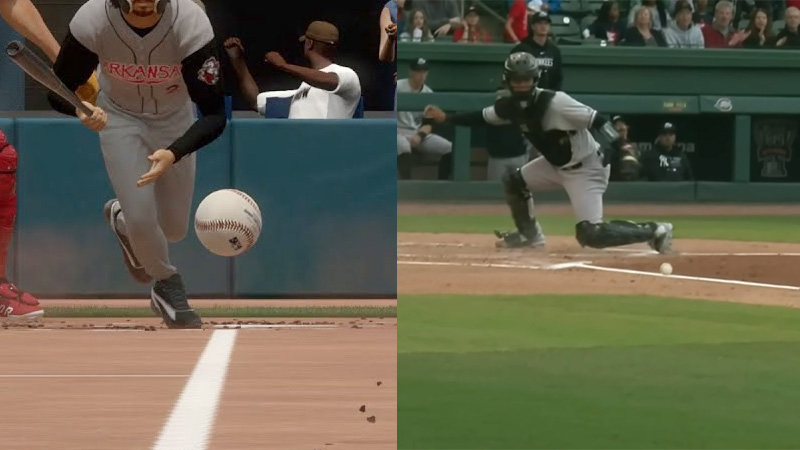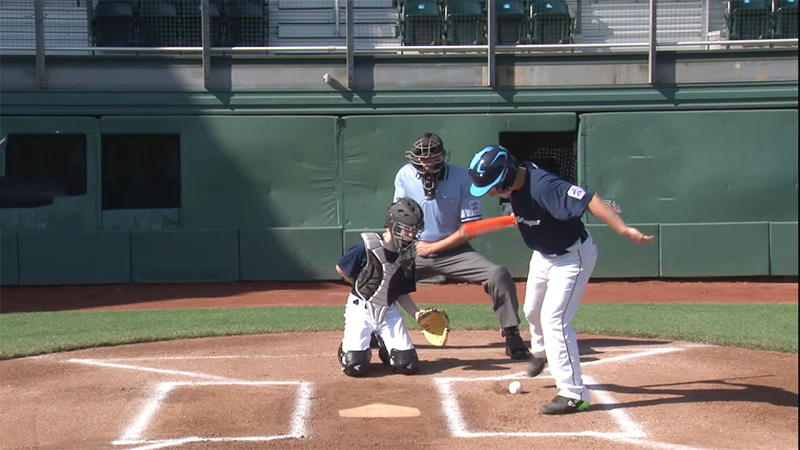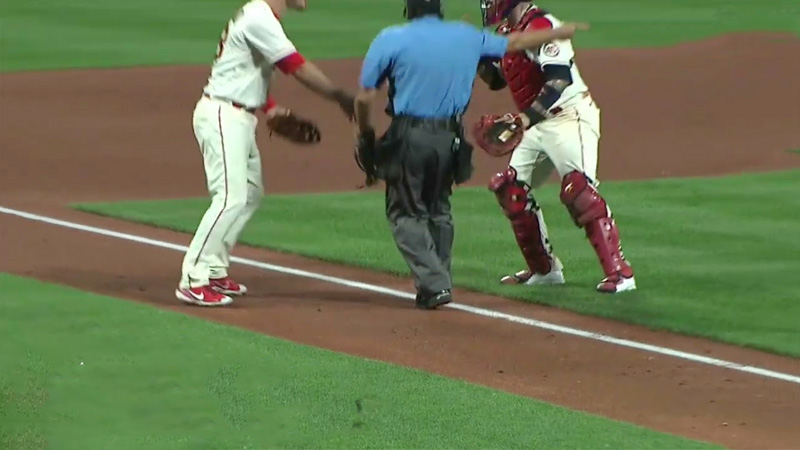Baseball, often referred to as America’s pastime, is a sport rich in tradition, strategy, and rules. One fundamental aspect of the game is the concept of a fair ball.
In this blog post, we will explore the definition and determination of a fair ball in baseball, examining the boundaries of fair territory and the criteria that must be met for a batted ball to be considered fair.
By delving into the intricacies of fair balls, we can deepen our understanding of the game and appreciate the significance of this essential aspect of baseball. Stay tuned.
What is a Fair Ball in Baseball?
In the game of baseball, the concept of a fair ball holds significant importance in determining the outcomes of plays. Understanding what constitutes a fair ball is crucial for players, coaches, and fans alike.
Here, we will deal with the definition and determination of a fair ball in baseball, exploring the boundaries of fair territory, the criteria for a batted ball to be considered fair, and the role of umpires in making fair ball determinations.
Fair Territory in Baseball
Fair territory refers to the portion of the playing field where a batted ball is in play. It is delineated by the foul lines, which extend from home plate to the outfield fences.
The area between these foul lines, including the infield and the outfield, is considered fair territory. It is within this region that a batted ball must stay to be considered fair.
Criteria for a Batted Ball to Be Considered Fair
To be deemed a fair ball, a batted ball must meet certain criteria. There are two primary conditions that determine whether a batted ball is fair:
Contact With a Fielder Within the Fair Territory
If a batted ball first touches a fielder while the ball is within the boundaries of the fair territory, it is considered a fair ball. This contact can occur in the infield or outfield, as long as the ball is within the designated fair territory at the time of contact.
Contact With the Field Within the Boundaries of the Foul Lines and Foul Poles
If a batted ball touches the ground or any object within the field of play, such as a base or a defensive player, before reaching first or third base, it is considered a fair ball.
The foul lines and foul poles themselves are considered part of the fair territory, so a batted ball that hits them is still in play.
Role of Umpires in Making Fair Ball Determinations
The responsibility of determining whether a batted ball is fair or foul lies with the umpires on the field. These officials play a crucial role in ensuring fair play and making accurate judgments.
Umpires are positioned strategically around the field to have the best vantage points for fair ball calls. Their judgment is based on their observations of the ball, the fielders, and the play as it unfolds.
The use of instant replay has also been introduced in some leagues to aid in fair ball determinations, providing an additional layer of scrutiny and accuracy.
The concept of a fair ball is fundamental to the game of baseball. It entails recognizing the boundaries of fair territory, the criteria for a batted ball to be considered fair, and the crucial role played by umpires in making fair ball determinations.
Fair Ball Vs. Foul Ball

In the game of baseball, the distinction between a fair ball and a foul ball plays a crucial role in determining the flow of the game and the outcomes of various plays.
This section will explore the key differences between fair and foul balls, as well as the consequences associated with each type of hit.
Distinction Between Fair and Foul Balls
Fair balls and foul balls are categorized based on where the ball lands or what it touches within the field of play. A fair ball is a batted ball that remains within the boundaries of the fair territory, as defined by the foul lines.
It may touch the ground or any object within the field of play and still be considered fair, as long as it remains within the designated fair territory.
On the other hand, a foul ball is a batted ball that lands or touches an object outside the foul lines, indicating that it is outside the boundaries of fair territory.
Consequences of Fair Ball
When a fair ball is hit, several important consequences come into play:
- The ball remains in play: A fair ball that is hit and stays within the boundaries of the fair territory remains in play. This means that the defensive team must attempt to field the ball and make a play to prevent the batter from advancing or the runners from scoring.
- Potential outcomes for the batter and runners: A fair ball offers various potential outcomes for the batter and baserunners. The batter can potentially reach base with a hit, allowing them the opportunity to advance further or potentially score a run. Baserunners may also advance to subsequent bases based on the progress of the play, potentially leading to additional scoring opportunities.
Consequences of Foul Ball
When a foul ball is hit, different consequences come into play:
- Ball is immediately dead: As soon as a batted ball lands or touches an object outside the foul lines, it is considered a foul ball. The play is immediately stopped, and the ball is deemed dead. This means that no further action can occur as a result of that particular hit.
- No impact on the game beyond adding to the pitch count: Foul balls do not count as hits or affect the score or base-running situations. However, they do impact the pitch count. If a batter hits a foul ball with two strikes, they remain at-bat, giving them another opportunity to put the ball in fair territory or potentially draw a walk.
While fair balls remain in play and can lead to various outcomes for the batter and runners, foul balls are immediately dead and have no direct impact on the game beyond adding to the pitch count.
Examples and Scenarios of Fair ball
To further illustrate the concept of fair and foul balls in baseball, this section will explore different scenarios that can occur during a game.
By examining these examples, we can gain a better understanding of how fair and foul balls are determined and the subsequent implications for the play.
Batted Ball is Caught by a Fielder in Fair Territory
In this scenario, a batter hits a ball that remains within the boundaries of fair territory and is caught by a fielder before it touches the ground. When a batted ball is caught by a fielder in fair territory, it is considered an out.
The fielder’s successful catch results in the batter being retired and any baserunners having to return to their respective bases. This scenario demonstrates how a fair ball can lead to an out and showcases the defensive skill of the fielding team.
Batted Ball Reaches the Outfield Grass Before Being Fielded
Imagine a batted ball that lands in the outfield grass, away from the infielders, before being fielded by an outfielder. In this scenario, the ball has touched the ground within the boundaries of fair territory.
The ball remains in play, allowing the batter to potentially reach base with a hit. Depending on the speed and trajectory of the hit, the batter may have an opportunity to advance to second or third base, or even score a run if the hit is particularly well-executed.
This scenario highlights the offensive potential of a fair ball that reaches the outfield grass.
Batted Ball Touches the Ground Outside the Foul Lines
In this case, a batted ball lands outside the boundaries of the fair territory, touching the ground beyond the foul lines. When a ball touches the ground or any object outside the foul lines, it is immediately ruled a foul ball.
The play is dead, and the batter returns to the plate with the same count as before the foul ball was hit. Foul balls have no direct impact on the game beyond adding to the pitch count.
This scenario emphasizes how a batted ball outside the foul lines is considered foul and does not contribute to the progression of the play.
Batted Ball Hits the Foul Pole
Consider a batted ball that makes contact with the foul pole, a vertical structure extending from the ground to the top of the outfield fence. When a ball hits the foul pole, it is still considered a fair ball. The foul pole itself is within the boundaries of fair territory.
If a batted ball hits the foul pole, it is in play, and the outcome of the hit depends on whether the ball remains in play or if it is caught by a fielder. This scenario demonstrates how a fair ball can interact with the foul pole and the potential implications for the play.
Whether a batted ball is caught by a fielder in fair territory, reaches the outfield grass, lands outside the foul lines, or hits the foul pole, each scenario has specific implications for the progression of the play.
Umpire’s Role and Challenges in Fair Ball

Umpires play a crucial role in the game of baseball, and their role becomes especially significant when it comes to determining fair ball calls.
This section will delve into the importance of umpires in making accurate fair ball judgments and the various factors that influence their decisions, including their positioning on the field and the impact of instant replay.
Importance of Umpires in Determining Fair Ball Calls
Umpires are responsible for making real-time judgments on whether a batted ball is fair or foul. Their decisions directly impact the flow of the game, determining whether a hit is in play or considered dead.
Umpires are entrusted with ensuring fairness and maintaining the integrity of the game by upholding the rules related to fair ball calls.
Their role is pivotal in keeping the game running smoothly and making accurate determinations that affect the outcome of plays and ultimately the final result of the game.
Factors Influencing Fair Ball Judgments
Several factors come into play when umpires make fair ball judgments. These factors can influence their ability to accurately determine whether a hit is fair or foul.
Umpire Positioning
The positioning of umpires on the field is strategically planned to provide them with the best possible vantage point for fair ball calls. Each umpire has a specific role and position, such as the home plate umpire, the first base umpire, the second base umpire, and the third base umpire.
Their placement allows them to observe the trajectory, location, and interaction of the ball with fielders or objects within the field. The positioning of umpires significantly contributes to their ability to make accurate fair ball calls.
Instant Replay and Its Impact on Fair Ball Call
In some baseball leagues, the use of instant replay has been implemented to review certain calls, including fair ball judgments. Instant replay allows umpires to review plays from multiple camera angles to ensure the correctness of their initial calls.
This technology assists umpires in making more precise determinations, reducing the likelihood of errors and providing a more objective perspective. However, the use of instant replay can also introduce challenges, such as the potential for delays in the game and the subjective interpretation of replays.
Umpires play a vital role in determining fair ball calls in baseball. Their ability to make accurate judgments in real-time impacts the flow of the game and the outcomes of various plays.
The significance of umpires and the factors that influence their decision-making, players, coaches, and fans can appreciate the challenges faced by these officials and gain a deeper understanding of the game’s dynamics.
Factors Influencing Fair Ball Determinations
| Factors | Explanation |
| Umpire Positioning | Strategic placement of umpires on the field for the optimal vantage point |
| Instant Replay | Use of technology to review and verify fair ball calls |
FAQs
How does umpire positioning affect fair ball determinations?
Umpire positioning plays a crucial role in fair ball determinations as it allows umpires to have the best vantage point to observe the trajectory and location of the ball.
By being strategically positioned on the field, umpires can make more accurate judgments on whether a batted ball is fair or foul.
Can umpires change their initial fair ball call after consulting with other umpires?
Yes, umpires have the ability to confer with each other to reach a consensus on fair ball calls. If an umpire is unsure or has a limited view of a play, they may seek input from their fellow umpires to make an accurate determination. This collaborative approach helps ensure fairness in the game.
How does instant replay impact fair ball calls?
Instant replay technology allows umpires to review certain calls, including fair ball judgments, by viewing multiple camera angles. This helps them make more precise determinations and reduces the likelihood of errors.
Instant replay can be used to confirm or overturn an initial fair ball call based on clear visual evidence, providing a more objective and accurate decision.
Are fair ball determinations subject to challenges by teams?
In some baseball leagues, teams have the option to challenge fair ball calls by requesting a replay review. Each team is typically granted a limited number of challenges per game.
If the challenge is successful and the replay review shows that the initial fair ball call was incorrect, the call may be overturned.
Conclusion
We have explored the definition and determination of fair balls, the distinction between fair and foul balls, and the consequences associated with each type of hit.
Umpires play a crucial role in determining fair ball calls, relying on their positioning on the field to make accurate judgments. Instant replay technology has also been introduced to aid in fair ball determinations, providing an additional layer of scrutiny and accuracy.
As we continue to follow baseball, it is important to recognize the significance of fair balls and the impact they have on the outcomes of plays and the final result of the game.
Embracing the rules and nuances surrounding fair balls enhances our enjoyment and understanding of the beloved game of baseball. Hope this little effort suffices your thirst for such knowledge a bit. Thank you.







